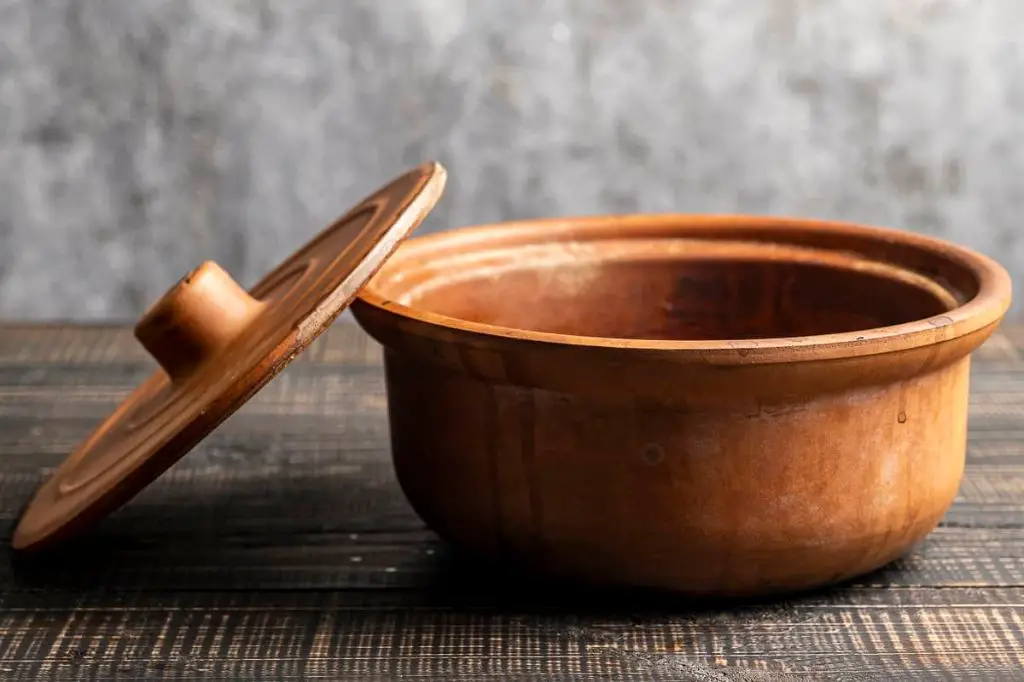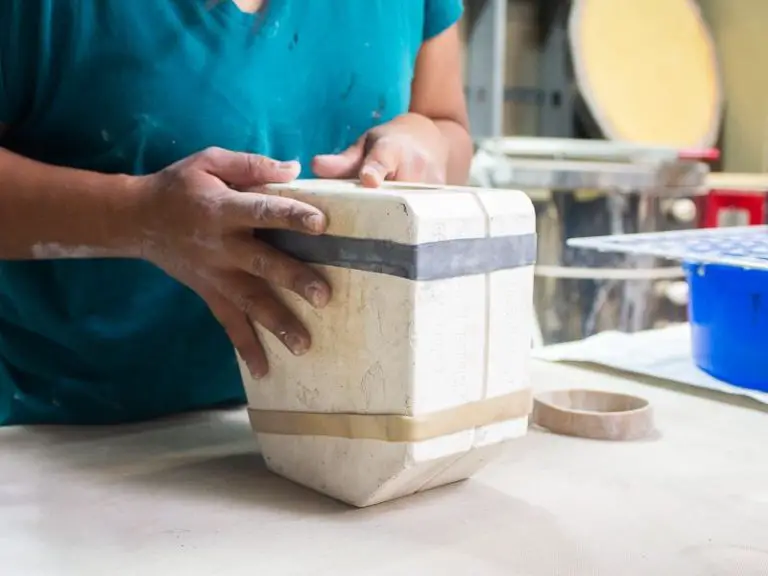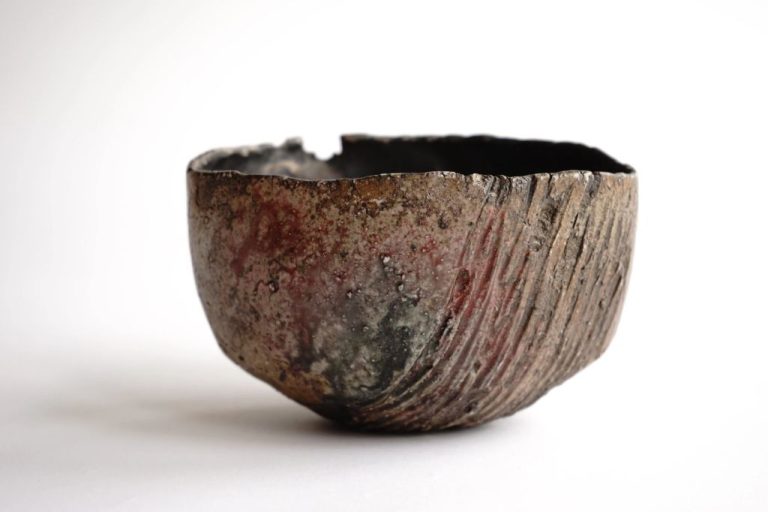How Do You Cook In A Romanoff Clay Pot?
Romanoff clay pots have a long history dating back to ancient Roman times. The Romans adapted clay pot cooking techniques that were already in use in various parts of the world. These clay pots became known as Roman pots and were similar to modern clay pots still produced today
Cooking with Romanoff clay pots offers several benefits. The pots heat food gently and evenly, sealing in moisture and flavor. Clay is porous and allows some evaporation which concentrates flavors. Clay pots can also cook food unattended without burning or drying out. They are useful for braised dishes, soups, stews, rice dishes, beans, and more.
Romanoff clay pots come in various shapes and sizes like round pots, braisers, baking dishes, tagines, etc. They are well-suited for long-cooked one pot meals, bread baking, roasting meats and vegetables, cooking beans, making yogurt and more. The versatility of Romanoff clay pots allows them to be used for everyday cooking as well as special occasion meals.
Sources:
https://en.wikipedia.org/wiki/Clay_pot_cooking
Selecting the Right Clay Pot
When selecting a Romanoff clay pot, there are a few key features to consider:
Materials – Authentic Romanoff pots are made from unglazed red clay. This porous material allows steam to circulate during cooking for even heating. Look for natural clay with no coatings or glazes. Some modern versions add a nonstick coating, but traditionalists recommend staying with plain terra cotta (source: Römertopf Clay Roaster).
Size – Romanoff pots come in sizes ranging from 1 quart up to 6 quarts. Consider what you’ll be cooking and how many people you need to serve. Larger pots are heavier when full, so keep that in mind as well. The 2 quart size is a good all-purpose choice for many households (source: Top 10 Clay Cooking Pots).
Shape – Traditional Romanoff pots have sloped sides and a loop handle for easy lifting. Some modern versions come in tagine, casserole, or bread baker shapes. Stick with sloped sides for even heating and moisture circulation (source: Romertopf Clay Bakers).
Seasoning the Clay Pot
Properly seasoning a new Romanoff clay pot before its first use is an essential step. Seasoning helps seal the porous clay and prevents food from absorbing into the unglazed pot. It also helps eliminate any “clay” taste in foods cooked in the newly made pot.
According to the Romertopf Use & Care Guide (http://fantes.net/manuals/romertopf-use-and-care.pdf), you should start by giving your new clay pot a “really good soak” in water for at least 30 minutes. This allows the clay to fully saturate with water.
After soaking, clean the pot with a brush to remove any clay dust left over from manufacturing. Rinse and dry completely. Then rub the entire inner cooking surface with vegetable oil or melted butter. Fully coat the bottom and sides.
Place the seasoned pot in a cold oven and turn the heat to 350°F. Bake for at least 30 minutes once it reaches temperature. Then turn off the oven and allow the clay pot to cool down completely in the oven before removing.
Your Romanoff clay pot is now ready for first use! Proper seasoning prevents food from absorbing into the porous clay and eliminates any “clay” taste.
Recommended Foods to Cook
Romanoff clay pots are well-suited for cooking a variety of dishes, but some foods work better than others in these unique pots. Here are some of the best dishes to cook in a Romanoff clay pot:
- Chicken dishes – From whole chickens to chicken thighs or drumsticks, chicken cooks up moist and flavorful in a clay pot. Try clay pot chicken, chicken tagine, or tandoori chicken. (https://www.pinterest.com/melshaw1946/romertopf/)
- Stews – The gentle, even heating of a clay pot makes it perfect for braises and stews. Cook beef stew, short ribs, or lamb tagine.
- Rice dishes – The clay evenly distributes heat, ensuring rice turns out fluffy. Make rice pilaf or biryani in your clay pot.
- Beans – Dried beans become tender and take on flavor when cooked in a clay pot. Cook chickpeas for hummus or kidney beans for chili.
- Vegetable dishes – From ratatouille to curry, clay pots bring out the best in veggies. Clay pot cooking concentrates flavors.
- Soups & stocks – Clay pots retain moisture well, ideal for simmering broths and soups like minestrone or lentil soup.
Some foods are not recommended for clay pot cooking:
- Delicate seafood – The lengthy clay pot cooking time can overcook quick-cooking fish and shellfish.
- Dairy-based dishes – Dairy-based sauces may burn and curdle during extended cooking.
- Desserts – The distinctive heating and moisture retention of clay pots do not lend themselves well to baking desserts.
- Dishes requiring high heat – Clay pots are designed for slow, gentle simmering rather than high-heat searing or frying.
Preparing to Cook in a Clay Pot
Proper preparation of ingredients is key for successful clay pot cooking. Make sure to cut ingredients into even sized pieces to ensure even cooking. For tough vegetables like carrots or potatoes, parboil or soften them first before adding to a clay pot.
When working with clay pots, keep these tips in mind:

- Always soak a new unglazed clay pot completely in water for several hours before first use to remove dust and prevent cracking. Refer to manufacturer’s instructions for details. Clay Pots Seasoning and Care Instruction
- Season an unglazed clay pot before use by coating the inside with a thin layer of vegetable oil, heating it slowly, then cooling completely. Repeat 2-3 times. This creates a natural nonstick surface.
- Unglazed clay pots require additional water when cooking. Add about 1/4 cup extra liquid to account for absorption into the porous clay.
- Soak beans and grains before cooking in a clay pot to reduce cooking time.
- Sear meats well before slow cooking and deglaze the pan with a liquid like wine or broth.
- Use a heat diffuser for electric stoves to prevent scorching.
- Once hot, clay holds heat evenly for slow cooking. Regulate temperature by moving on and off heat.
- Let clay pots cool before cleaning. Avoid drastic temperature changes which can cause cracking.
With the right prep and care, clay pots make wonderful versatile cooking vessels.
Cooking Techniques
Clay pots like the Romanoff allow for moist heat cooking methods like braising and stewing. The porous clay absorbs moisture during cooking which helps prevent burning or scorching.
For braising tough cuts of meat or poultry, brown the protein first on the stovetop, then add to the clay pot with vegetables and a small amount of liquid like wine, broth or water. Cook covered in a 250-325F oven for several hours until fork tender. The clay will distribute heat gently and evenly.
For stews, sauté aromatics like onions, carrots and celery first. Add cut up meat and potatoes or other veggies. Barely cover with liquid and cook in a 300F oven for 2-3 hours. The clay will draw out juices from the ingredients and concentrate flavors.
For rice dishes like risotto, cook on the stovetop or in the oven at 300-325F, stir occasionally and add extra liquid as needed. The clay holds onto steam and makes rice extra creamy.
For beans, soak first, then combine with water or broth in the clay pot and cook at 250F for 6-8 hours until tender. The clay allows slow even cooking.
For managing temperature, preheat the empty clay pot in the oven while preparing ingredients. Use a meat thermometer if roasting meat. For stovetop cooking, use low to medium heat only to prevent cracking the clay. Adjust heat as needed to maintain a gentle simmer.
Check doneness periodically by lifting the lid carefully. Add extra liquid during cooking if needed. Clay holds onto moisture so food rarely dries out.
Serving Food from Clay Pots
When serving food cooked in a clay pot, presentation is key. The clay pot itself brings visual interest and rustic charm to the dining table. Here are some serving tips:
- Place a trivet or protective pad under the clay pot to protect table surfaces from heat damage. Clay pots retain heat very well.
- Garnish the dish with fresh herbs, edible flowers, or lemon wedges placed around the rim of the pot.
- For stews or braised meat dishes, use a ladle to scoop food into individual bowls at the table. Keep the clay pot simmering on a warming plate.
- For rice or grains, fluff with a fork before serving onto plates from the clay pot.
- Consider placing small dishes of chutneys, pickles, or other condiments around the pot for diners to help themselves.
One of the benefits of clay pot cooking is that the food stays warm for a long time. Here are some tips for keeping food hot at the table:
- Place a tea light under the pot if the table surface is heat-safe.
- Use a food warmer or warming plate designed for clay pots.
- Transfer the pot to a trivet on a buffet table near diners to allow convenient self-serving.
- For a lazy Susan-style serving, place the clay pot on a rotating tray in the center of the table.
With its traditional rustic look and effective heat retention, serving meals family-style from a clay pot makes for warm, communal dining experience.
Cleaning and Care
Proper cleaning and care is important for extending the lifespan of your Romanoff clay pot. Here are some tips:
After each use, allow the clay pot to cool completely. Wash it by hand using hot water and a soft sponge or cloth. Avoid abrasive scouring pads, as they can scratch the clay surface. A mild dish soap is fine, but avoid harsh detergents. For tough stains or baked-on food, fill the pot with hot water and a spoonful of vinegar and let it sit for 15-30 minutes before scrubbing [1]. The vinegar will help loosen debris.
For thorough periodic cleaning, occasionally “cook” the empty pot in a larger pot filled with hot water and a splash of vinegar for 30 minutes. This deep cleaning helps remove absorbed oils and residue.
After washing, thoroughly dry the pot with a towel. Let it air dry completely before storing, as moisture can breed mildew on clay surfaces. Store the pot with the lid off in a well-ventilated cupboard.
With proper care between uses, your Romanoff clay pot can last for years. Avoid sudden temperature changes which may cause cracking. And never place a hot clay pot on a cold surface. By following these tips, your pot will provide delicious results meal after meal.
Troubleshooting Common Issues
Clay pots are durable but prone to some common problems. Here are tips for preventing and fixing the main issues that can arise when cooking with Romanoff clay pots:
Preventing Cracked Pots
To prevent cracking, handle the clay pot gently and avoid extreme temperature changes. Do not put a hot pot straight into cold water or place a chilled pot into a hot oven. Allow the pot to come to room temperature before washing. Also, avoid dropping or knocking over the pot, as clay is brittle.1
Fixing Stuck On Food
If food gets stuck on after cooking, fill the pot with water and let it soak for 30-60 minutes. Then scrub with a plastic brush or non-abrasive sponge and wash as usual. Avoid using metal scrubbies or abrasive cleaners, as they can damage the clay surface. If needed, let it soak longer to fully loosen stuck on residue.2
Other Troubleshooting Tips
Check for hairline cracks occasionally, especially if noticing food is drying out too quickly. Re-season the pot every 3-6 months to maintain nonstick properties. Avoid strong-smelling or acidic foods the first few uses after seasoning. Contact manufacturer if pot seems defective or cooking results are repeatedly unsatisfactory.
Clay Pot Recipes to Try
Romanoff clay pots are extremely versatile for cooking a variety of delicious dishes. Here are some top recipe ideas to try in your clay pot:
Main Dishes
Cook up flavorful main dishes like Römertopf Roasted Chicken and Root Vegetables, Tandoori Chicken, or Risotto in your clay pot.
Sides
Try out delicious side dishes like Romanoff Artichokes, Beans, or Au Gratin Potatoes.
Desserts
For something sweet, bake up Yogurt Cake, Cinnamon Rolls, or Cheesecake in the clay pot.




